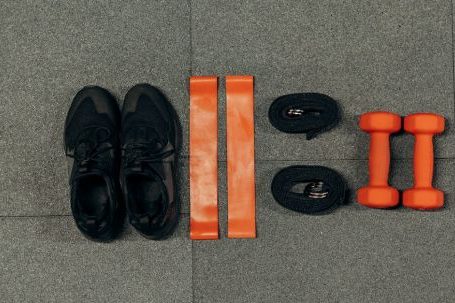Strength training is an essential component of any well-rounded fitness routine. Whether you’re a beginner or an experienced lifter, selecting the right weight is crucial to ensure you’re challenging your muscles effectively and minimizing the risk of injury. With so many options available, it can be overwhelming to know where to start. In this article, we will guide you through the process of choosing the right weight for your strength training workouts.
Understanding Your Fitness Level
Before you begin lifting weights, it’s important to assess your current fitness level. This will help you determine the appropriate starting point and allow for progressive overload over time. If you’re a beginner, it’s advisable to start with lighter weights to focus on proper form and technique. As you become more comfortable and confident, you can gradually increase the weight.
Setting Clear Goals
Having clear goals is essential when it comes to strength training. Are you looking to build muscle mass, improve overall strength, or increase endurance? Understanding your goals will help you choose the appropriate weight for each exercise. For example, if your goal is to build muscle, you’ll want to select a weight that allows you to perform 8-12 repetitions with proper form before reaching muscle fatigue.
Considering Your Exercise Selection
The weight you choose will also depend on the specific exercise you’re performing. Compound exercises, such as squats and deadlifts, engage multiple muscle groups and generally require heavier weights. On the other hand, isolation exercises, such as bicep curls or tricep extensions, target specific muscle groups and typically require lighter weights. Tailoring your weight selection to each exercise will ensure you’re effectively targeting the intended muscles.
Listening to Your Body
One of the most important factors in choosing the right weight is listening to your body. Pay attention to how your muscles feel during and after each set. If the weight feels too light and you’re able to easily complete the desired number of repetitions, it may be time to increase the weight. Conversely, if you’re struggling to complete the set or experiencing pain or discomfort, it’s a sign that the weight may be too heavy. It’s essential to find a weight that challenges you without compromising your form or risking injury.
Progressing Gradually
As you continue to strength train, it’s important to progress gradually to avoid plateaus and maximize your results. Gradually increasing the weight by 5-10% each week can help ensure you’re continuously challenging your muscles. This progressive overload will stimulate muscle growth and strength gains over time. However, be mindful not to increase the weight too quickly, as this can lead to excessive strain on your muscles and increase the risk of injury.
Seeking Professional Guidance
If you’re new to strength training or unsure about selecting the right weight, seeking guidance from a fitness professional can be immensely helpful. They can assess your individual needs, provide proper instruction on form and technique, and recommend appropriate weights for your specific goals. A qualified trainer can also help you create a personalized training plan that ensures you’re progressing safely and effectively.
In conclusion, choosing the right weight for strength training is a crucial step in achieving your fitness goals. By assessing your fitness level, setting clear goals, considering your exercise selection, listening to your body, progressing gradually, and seeking professional guidance when needed, you can ensure that your strength training workouts are effective, safe, and enjoyable. Remember, the key is to find a weight that challenges you while maintaining proper form. So, go ahead and confidently select the appropriate weight for your next strength training session!





